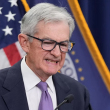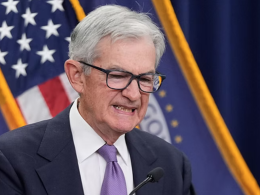by Kevin Flanagan, Head, Fixed Income, & Samuel Rines, Macro Strategist, Model Portfolios WisdomTree
Key Takeaways
- President Trump’s return to office has reignited “America First” economic policies, with tariffs, as well as sweeping executive orders focused on energy and infrastructure taking center stage thgus far.
- Fed Chair Jerome Powell signaled no urgency to cut interest rates, with the earliest anticipated cut now pushed to June 2025, contingent on macroeconomic data and Trump’s policy impact.
- Treasury yields are expected to remain volatile and elevated, with the 10-year potentially revisiting the 5% level, reinforcing the need for a strategic fixed income approach amid ongoing volatility.
The first month of 2025 is now in the rearview mirror, and investors recently experienced a fortnight (14 days) of headline-making activity, ranging from President Trump taking office, the January Federal Open Market Committee (FOMC) meeting, and of course, the developments surrounding the DeepSeek news. In fact, we’ve already seen that in Trump 2.0, the President will, once again, not be refraining from offering his thoughts on what the Fed should do, i.e. lowering rates. Against this backdrop, we thought it would be useful to offer some insights on what to potentially expect out of Washington, D.C. in the months ahead and how U.S. interest rates could possibly be affected.
Trump
- The Trump Administration has begun to implement policy changes through numerous Executive Orders.
- Many (of the market relevant) EOs are related to energy and energy infrastructure, and this area will remain a primary focus of the administration.
- As we just witnessed, tariff-related headlines will more than likely remain a key part of the Trump policy landscape creating a fluid backdrop. While Canada and Mexico received a reprieve for now, China has seen a 10% number imposed. These are the first … but they will not be the last.
- How these various trade policies affect GDP and markets is – at this point – indeterminate for both the US and others. Countries and companies have hardened their economies and supply chains over the past 6 years, and these actions will now be put to the test.
- The Administration sent government employees an option to leave their employment with the expectation of 5-10% choosing to do so. That would equate to roughly 150,000 to 300,000 government employees leaving their current employment.
- “America First” economic policies are seizing the attention of the markets, and that dynamic will continue as the tariff and trade announcements come across the wires … this is not going to abate in the near future and neither will the consequent volatility.
Powell
- The January FOMC meeting was uneventful (no rate cut), and Chairman Powell offered little in the way of definitive forward guidance
- While Powell did state that “we’re meaningfully above” the neutral rate for fed funds, he also emphasized the Fed is in no hurry to cut rates
- With respect to future monetary policy decisions, a ‘reactionary’ Fed is in data & policy dependent mode, not just waiting for fresh incoming economic/inflation reports, but also waiting to see how Trump-related policies, i.e. tariffs, etc. could impact the macro backdrop
- Unless there are downside surprises in upcoming macro data, the bar appears to be on the higher side for a rate cut at the March FOMC meeting
- Implied probabilities for fed funds futures look for the next rate cut to come at the June FOMC meeting and are tilted towards two rate cuts for 2025
Rates
- Due to the ‘Trump & Powell’ effect, we expect to see continued volatility in the Treasury (UST) market, with overall yields remaining at ‘normal’ elevated levels even if the Fed does cut rates again later this year
- We feel future readings for the UST 10-year yield may be skewed to the upside, with another run at the 5% threshold a distinct possibility
- Treasury yield curves should stay ‘un’inverted moving forward
Conclusion
Given the backdrop we outlined in this blog, our preferred fixed income strategy to navigate what may lie ahead is our active-passive barbell approach.
Copyright © WisdomTree














